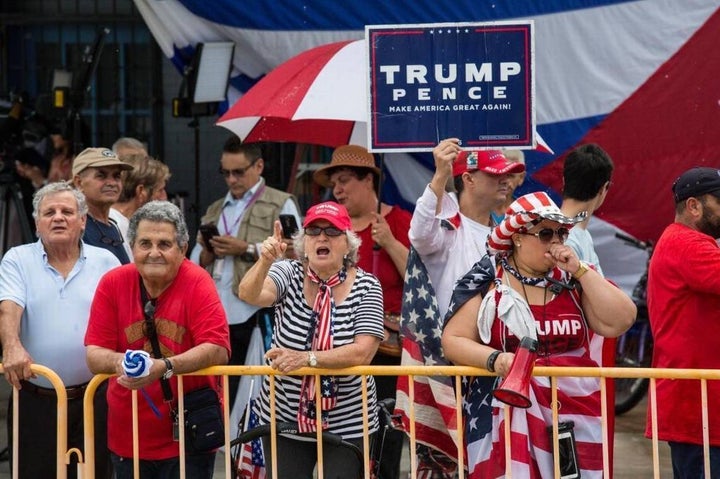
Local Miami Residents in Support of Trump’s agenda
The article published in The New York Times by Richard Fausset is a difficult pill to swallow ― there’s no denying that. Scrolling through my Facebook news feed was enough to understand how other minorities felt by the controversial piece: many of my friends and the people I follow are in complete disagreement with the article and question where The New York Times stands in regard to white nationalism and supremacy.
As a first-generation Dominican-American living in Miami, I attest to the story needing to be published. Although Miami is one of the southernmost cities in the United States, it’s actually more open-minded than not, and many people share similar ideologies. To this day, I’ve yet to see a Confederate flag waving on a lawn or a swastika tattooed on a person’s face. Conversely, it’s not necessarily what I see in Miami that startles me, but the conversations I hear.
The reason I choose to live in Miami is simple: the Latin American culture. Miami takes me back to waking up to salsa music on Sunday mornings while my mother cleaned the house and my father cooked breakfast. To visiting the Hispanic islands and being able to throw practically any seed in the ground and watch fruits flourish day by day.
Unfortunately, Miami also reminds me of the racist conversations members of the Latin American community frequently discuss. Things Hispanics in America (especially in Miami) say that contribute to our nation’s racism, like “I prefer to live in white neighborhoods because black people…” or “Don’t mess up ‘la raza’ (the ‘race’) by marrying a black person” are a major contribution to our nation’s racial discrimination ― especially said by those Latin Americans in the United States who consider themselves “liberal.”
What shocked me most was when I snuck in to hear Trump’s speech when he came to Miami this past June. I originally went to attend a protest being held outside of the establishment where he was scheduled to speak, but somehow made my way inside. I sat on the mezzanine of the Manuel Artime Theater, where a middle-aged Cuban lady and her father sat to my right. She assumed that I was a supporter of Trump’s agenda and proceeded to spark conversation. Her major concern was Muslims “infiltrating” American society and how it would affect national security. Her words, however, degraded Muslims and people of color in general. The entire crowd (minus the media) showed their support of the administration’s agenda by cheering louder than any other group of people I’ve seen in Miami.
Until then, I was in complete disbelief to the amount of Miamians in support of Trump. Regardless of why white Latin Americans were attending, it shows that white supremacy is also ingrained into Latin American culture in the United States ― specifically white Latin Americans in Miami. In fact, Miami schools are becoming more and more racially segregated, according to a Florida State University analysis ― which proves that segregated neighborhoods in Miami are alive and well. While Latin Americans in Miami claim to be patriotic Americans, they must have forgotten their indigenous and African roots, and crossed over to white nationalism and supremacy.
The Times article discussed earlier is a perfect example of how normal white nationalism and supremacy in America truly is. Although the story of Tony and Maria Hovater’s life may seem morally worse to minorities simply because they are white Americans, if you remove the swastikas and Confederate flags, many Latin Americans aren’t any better ― we just have a more subtle way of showing it.
Articles like the one published in The New York Times shouldn’t be something to be angry about. If anything, shedding light on how normal white supremacy in America has always been will better our understanding of why people share those ideologies, and what we can do to teach our children better.
